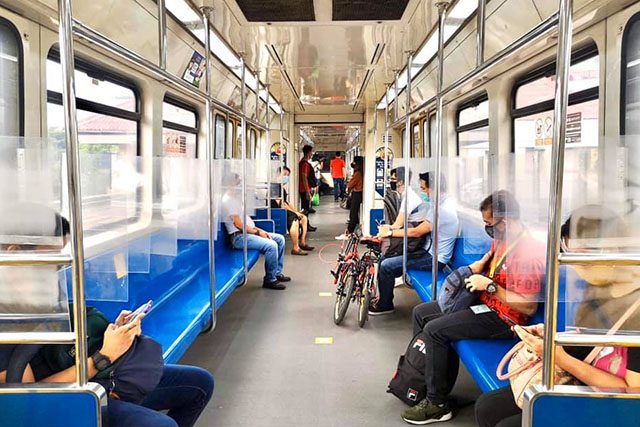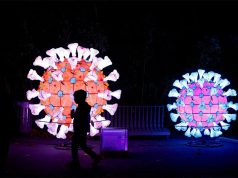
Proposals to improve ventilation in indoor spaces, such as in offices, were made online after recent studies showed the novel coronavirus is airborne.
Early into the pandemic last year, the World Health Organization and other health organizations have stated that the virus which causes COVID-19 is not airborne.
READ: Duterte once again claimed that COVID-19 is ‘in the air.’ But here’s what health experts say
Instead, they were firm that it is transmitted through droplets generated by an infected person or medical procedures that generate aerosols.
What the new Lancet study states
The latest study was from peer-reviewed journal The Lancet titled “Ten scientific reasons in support of airborne transmission of SARS-CoV-2.
Lancet’s official website could not be accessed, as of writing.
American cardiologist and author Eric Topol managed to take screenshots of it and shared them on Twitter on April 16.
Airborne it is. 🦠
The 10 streams of overwhelming evidencehttps://t.co/y3ZT40Nsu8@TheLancet by @trishgreenhalgh @kprather88 @Rschooley @zeynep @jljcolorado @dfisman
a 5-★ succinct summary pic.twitter.com/Ox305pSoaU— Eric Topol (@EricTopol) April 15, 2021
Here are the scientific reasons or proof that the virus can be transmitted via air stated in the summary:
- “First superspreading events account for substantial SARS-CoV-2 transmission; indeed, such events may be the pandemic’s primary drivers.” The researchers cited choir concerts, room sizes, care homes, correctional facilities and other areas where humans interact.
- “Long-range transmission of SARS-CoV-2 between people in adjacent rooms but never in each other’s presence has been documented in quarantine hotels.”
- “Third, asymptomatic or presymptomatic transmission of SARS-CoV-2 from people who are not coughing or sneezing is likely to account for at least a third, and perhaps up to 59% of all transmission globally and is a key way SARS-CoV-2 has spread around the world.”
- “Transmission of SARS-CoV-2 is higher indoors than outdoors.”
- “Nosocomial infections (hospital acquired infections) have been documented in health-care organizations, where there have been strict contact-and-droplet precautions.”
- “Viable SARS-CoV-2 has been detected in the air.”
- “SARS-CoV-2 has been identified in air filters and building ducts in hospitals with COVID-19 patients; such locations could be reached only by aerosols.”
- “Studies involving infected caged animals that were connected to separately caged uninfected animals via an air duct have shown transmission of SARS-CoV-2 that can only be adequately explained only by aerosols.”
The researchers added that no study has provided “strong or consistent evidence” to counter or challenge the hypothesis of airborne transmission yet.
“There is consistent, strong evidence that SARS-CoV-2 spreads by airborne transmission. Although other routes can contribute, we believe that the airborne route is likely to be dominant. The public health community should act accordingly and without further delay,” they said.
One of the researchers Trisha Greenhalgh also emphasized in a Twitter thread that the research involves doctors and scientists.
Greenhalgh stated that their paper immediately received backlash after being published.
“It’s well-researched scholarly argument, produced by an interdisciplinary team of 6 professors including three doctors, two aerosol scientists and one social scientist,” she said.
Criticism 1: “The paper is just opinion, and several authors aren’t even doctors.”
Response: No. It’s well-researched scholarly argument, produced by an interdisciplinary team of 6 professors including 3 docs, 2 aerosol scientists and 1 social scientist.
2/— Trisha Greenhalgh 😷 #CovidIsAirborne (@trishgreenhalgh) April 24, 2021
Proposal for proper air ventilation
Robert Anthony Siy, Pasig City’s public transport planner, proposed the need for proper ventilation in indoor spaces, especially in workplaces.
“We NEED new messaging. Face masks + shields+ social distancing alone is obsolete. Previous “close contact” definition insufficient. Workplace safety needs a specific campaign. People need more ayuda to stay home,” Siy wrote.
Researcher Ken Abante echoed the need for fresh air outdoors, rather than air-conditioning indoors.
Covid is airborne. Open your windows and doors.
Covid is airborne. Limit time indoors.
Covid is airborne. Encourage fresh air ventilation.
Covid is airborne. Discourage recycling air with air con.
Covid is airborne. Avoid close contact.
Covid is airborne. Use air / HEPA filters. https://t.co/y53aTdLB9J— Ken #CovidIsAirborne Abante (@KenAbante) April 25, 2021
Pediatric neurosurgeon Ron Baticulon echoed that the Lancet paper is a proof that plastic face shields in public spaces are no longer helpful.
“Hello, Philippines. This is what we need. NOT face shields in public spaces, NOT plastic barriers (on motorcycles!), NOT paper forms for imaginary contact tracing, and definitely NOT meter sticks!” Baticulon said.
Andro Umali, an emergency medicine doctor at the Medical City, also mentioned the disadvantage of malls as social gathering areas for most Filipinos.
“Now that we are faced with COVID being airborne, the dilemma lies in lessening the restrictions and gaining economic traction yet at the risk of spikes,” Umali said.
However, in areas under the modified enhanced community quarantine, more businesses that operate indoor services were allowed to operate at limited capacity.
These include indoor dining at a 10% seating capacity and personal care services at 30% capacity.
The MECQ was extended until May 14.
READ: Philippines extends limits on movement, gatherings to curb COVID
Other related studies
Similar to the Lancet research, a study titled “Indoor air changes and potential implications for SARS-CoV-2 transmission” which was also recently published stated that most COVID-19 outbreaks occurred inside buildings via “far-field airborne transmission.”
“With SARS-CoV-2, the majority of outbreaks involving three or more people have been linked with time spent indoors, and evidence confirms that far-field airborne transmission (defined as within-room but beyond 6 feet) of SARS-CoV-2 is occurring,” part of the research read.
In a briefer last year, the US Centers for Disease Control and Prevention has also considered using the term “airborne” for COVID-19 transmissions.
However, the organization still maintained that based on data available that time, the deadly pathogen is not yet airborne.
“The epidemiology of SARS-CoV-2 indicates that most infections are spread through close contact, not airborne transmission,” the US CDC said.









